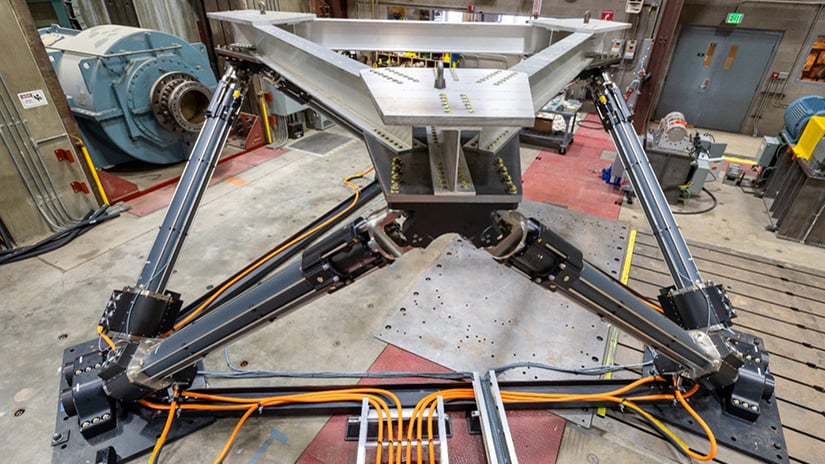Motion Platform
NREL's Flatirons Campus features a motion platform that simulates ocean conditions for water power, wind energy, and solar power device validation.
Explore the motion platform's capabilities below or via the NREL motion platform fact sheet.
Capabilities
The Stewart platform enables researchers to fine-tune their designs quickly and cost-effectively. Researchers and technology developers can use NREL's large-amplitude motion platform to validate their small or up to full-scale marine technologies in a dry environment. The platform, which can emulate many of the typical wave states available across the United States, can also:
- Support devices that weigh up to 10,000 kg
- Perform the six degree-of-freedom motions that occur in the ocean, including surges of up to 2.5 m, sways up to 2.3 m, and heaves up to 1.8 m
- Use real wave data to mimic actual sea conditions and modify motions in real time.
With NREL’s large-amplitude motion platform, researchers and technology developers can identify potential flaws before subjecting their prototypes to open ocean trials, which can be time-consuming and costly. The platform enables researchers to fine-tune their designs quickly and cost-effectively.

The lab’s large-amplitude motion platform, or LAMP, can mimic ocean motions, including waves up to 8 ft high, and supports devices weighing about as much as a small recreational vehicle. Photos by Bryan Bechtold, NREL
Contact
Share
Last Updated March 11, 2025
